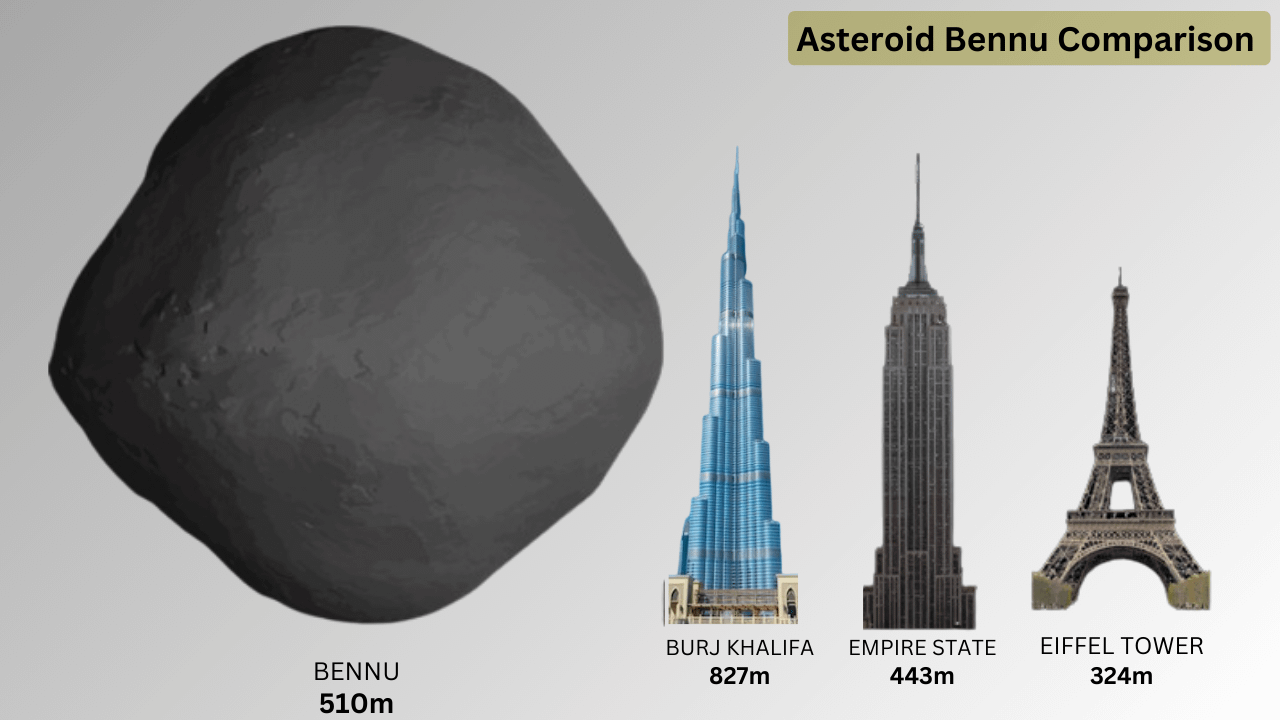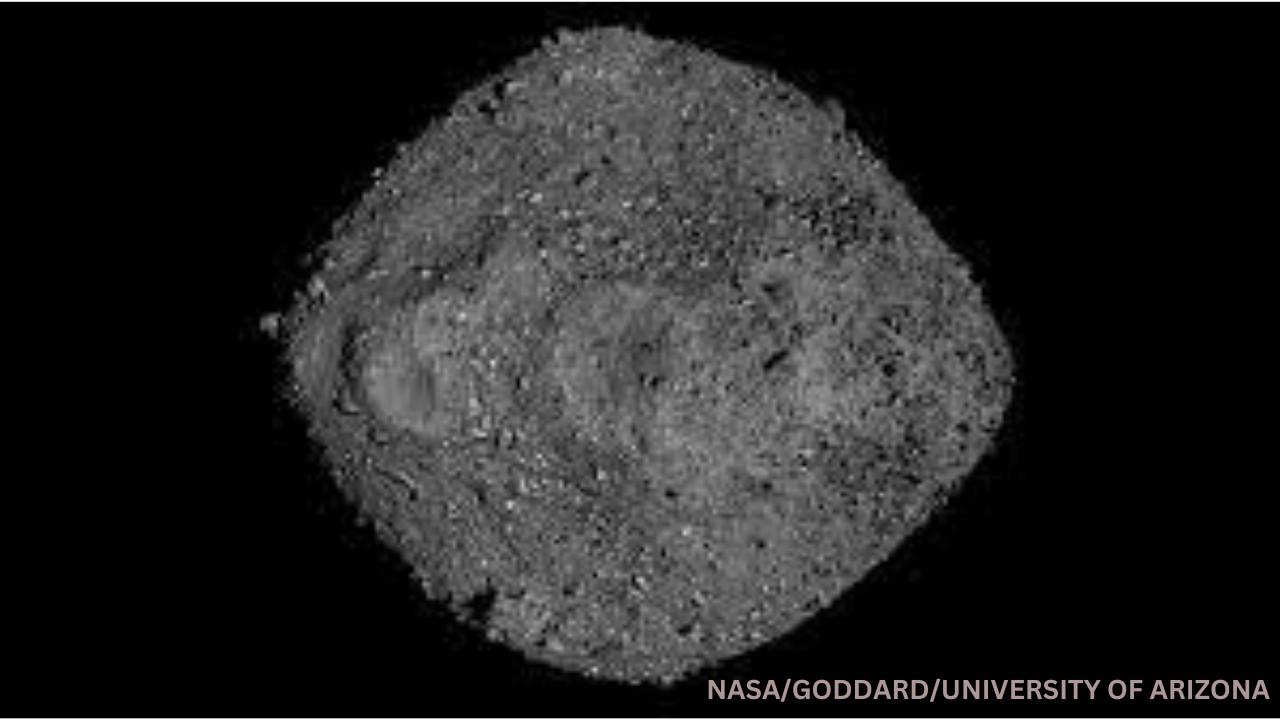Table of Contents
On Sunday, NASA’s Osiris-Rex capsule will streak through Earth’s atmosphere at a speed more than 15 times faster than a rifle bullet
“When performing this task, it will generate a fiery spectacle in the sky, but with the assistance of heat shields and parachutes, we will decelerate its descent, safely landing it in the western desert of Utah.
Inside the capsule lies a precious cargo, a small amount of dust collected from the asteroid Bennu, a colossal space rock comparable in size to a mountain. This material holds the potential to unlock profound questions about our origins.

We intend to analyze remnants that may have existed on our planet in the distant past, including minuscule particles that might have been present during Earth’s formation, as we return with a 250-gram 9 ounce sample from Bennu.
Our aim is to piece together the beginnings of our planet’s story,
- How did Earth come into existence, and what makes it a hospitable world?
- Where did our oceans’ water originate? How did our atmosphere’s air form?
- Most crucially, what is the source of the organic molecules that constitute all life on Earth?

A widely accepted notion is that crucial ingredients necessary for Earth’s development were delivered by asteroids like Bennu during its early history, some of these asteroids could have been similar to Bennu.
Engineers have provided the Osiris-Rex spacecraft with its final set of instructions for its return path to Earth, The critical decision to release the capsule for its Earth landing later this week is pending.
Mapping Bennu for Sample Collection
The mission to retrieve Bennu samples commenced in 2016 when NASA began studying the 500-meter-wide 1,640 foot asteroid using the Osiris-Rex probe, It took two years to reach the asteroid and another two years to thoroughly map its surface, ensuring a suitable location for sample collection.
The choice of the sampling site was aided by British rock legend and astrophysicist Dr. Brian May, known for his guitar skills in Queen. Dr. May’s expertise in stereo imagery allowed him to create 3D scenes by combining images from slightly different angles. He, along with collaborator Claudia Manzoni, assisted in shortlisting safe places to make contact.
Precise Site Selection and Astonishing Sample Collection
Dr. Brian May stated, “I always say, you need art as well as science. You need to get a feel for the location, considering whether the spacecraft might land safely or collide with a hazardous boulder on the edge of the chosen site, known as Nightingale. A collision with such a boulder would have been catastrophic.”
The moment of sample collection on October 20, 2020, was nothing short of miraculous. Osiris extended its robotic arm to touch the asteroid’s surface and released nitrogen gas to dislodge soil. What ensued was astonishing: the surface behaved like a liquid, and the arm sank 10 centimeters (4 inches) into the asteroid. The nitrogen jet created an 8-meter (26-foot) hole, collecting material into the sample collection head.
This is why we are now on the brink of receiving the Bennu sample, following a seven-year, 4.4-billion-mile journey by Osiris-Rex.
After the capsule safely lands on Earth, it will be transported to the Johnson Space Center in Texas, where a specialized cleanroom has been prepared for sample analysis.
Dr. Ashley King’s Involvement in Analyzing Bennu Samples
Dr. Ashley King from the Natural History Museum in London will be one of the initial researchers to analyze the material. He is part of the initial analysis team, stating, We don’t often receive asteroid samples, so we want to analyze them thoroughly and with great precision, It’s incredibly exciting.
Bennu is considered by NASA as one of the most hazardous asteroids in our solar system, with an orbit that periodically brings it close to Earth, However space missions have the capability to alter its course, and there is no risk of an impact in this century.
Scientists are keen to compare the hydrogen isotope ratios in this water with those in the seas of Earth in order to shed light on the origins of our planet’s water, Bennu is thought to contain a considerable amount of water, up to 10% of its weight, trapped inside its minerals.
The sample return mission offers the chance to investigate the ancient carbon components within Bennu, In addition Bennu probably contains 5–10% carbon by weight, which is of considerable importance because life on Earth is founded on carbon chemistry.
Exploring Carbon Compounds in Bennu
Professor Sara Russell of the Natural History Museum notes, “One of the first tasks is to identify all the carbon-based molecules present in the sample. Meteorites have hinted at various organic molecules in asteroids, but they are often contaminated, This sample return will help us uncover the authentic ancient carbon compounds in Bennu.”
Amino Acids and Asteroid-Origin Life Blocks
Professor Lauretta emphasizes, “We have not previously searched for amino acids suitable for protein formation due to concerns about terrestrial contamination, Thus we believe we are advancing our understanding of exogenous delivery, the idea that asteroids supplied the building blocks for life.”


[…] Many missions underway or about to be launched represent a new space race for the greatest scientific discovery of all time. Astronomer Royal Scotland Catherine Heymans says we live in an infinite universe full of countless stars and planets. […]